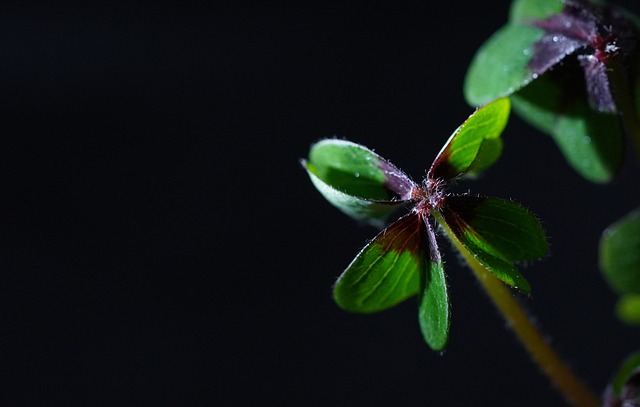Clover mites, warm-climate pests, pose a challenge with their rapid spring/fall emergences and grass-based diets. Professional clover mites prevention services offer eco-friendly solutions like natural oils, fungi, and bacteria to disrupt their lifecycle. These professionals provide both residential and commercial treatments, prioritizing effective extermination while minimizing ecological impact. Many opt for non-chemical methods focusing on lawn care, beneficial insects, and plant-based repellents. For severe infestations, professionals employ a mix of eco-friendly techniques and targeted pesticides, offering tailored plans for customized prevention and control.
Tired of itchy, irritating clover mite bites? Discover natural remedies for managing these pests in your outdoor spaces. This comprehensive guide covers everything from understanding the clover mite’s behavior and life cycle to exploring traditional vs. natural control methods and eco-friendly prevention strategies. Learn about professional clover mites removal services and when to seek expert help for effective residential or commercial treatments, ensuring a comfortable, mite-free environment.
Understanding Clover Mites: Behavior and Life Cycle
Clover mites are tiny insects that can become a significant pest in outdoor spaces, particularly in regions with warm climates. Understanding their behavior and life cycle is essential when considering natural remedies for management. These mites prefer to feed on grass and other low-growing plants, often targeting lawns, gardens, and landscapes. They are most active during the spring and fall seasons, when they emerge from their winter dormancy, and their populations can quickly grow into infestations.
The life cycle of clover mites involves several stages: egg, nymph, and adult. Female mites lay eggs on grass blades or in cracks and crevices of the soil. These eggs hatch into nymphs, which then mature into adults capable of reproducing. A single female mite can produce hundreds of eggs during her lifetime, making early detection and prevention crucial. Professional clover mites prevention services often employ eco-friendly solutions like natural oils, fungi, and bacteria to disrupt their life cycle and protect outdoor spaces from these persistent pests.
Traditional vs. Natural Methods for Control and Removal
In the battle against clover mites, there are two primary approaches: traditional methods and natural remedies. Professional clover mites removal often relies on chemical pesticides, which can be effective but come with potential health risks and environmental concerns. These chemicals may not only harm beneficial insects but also persist in the soil and water sources, leading to long-term ecological imbalances.
On the other hand, eco-friendly clover mites solutions focus on prevention and non-toxic treatments. Residential and commercial clover mites treatment options include regular lawn care practices such as mowing, aeration, and proper watering. Some natural pest control methods involve introducing beneficial insects like ladybugs or using plant-based repellents. These organic clover mites infestation treatment strategies not only minimize ecological impact but also promote a healthier outdoor environment for both humans and local wildlife.
Eco-Friendly Strategies for Prevention and Management
Many homeowners and business owners are turning to eco-friendly strategies for preventing and managing clover mite infestations. Instead of relying solely on chemical pesticides, which can be harmful to both people and the environment, consider these natural approaches to keep clover mites at bay. Professional clover mite prevention services often employ a combination of tactics like creating physical barriers, introducing beneficial insects that feed on clover mites, and using plant essential oils or neem oil for repellency.
For residential properties, regular lawn care practices such as keeping grass mowed short and removing debris can help deter clover mites. Commercial spaces might require more robust solutions, including commercial clover mite extermination services that specialize in treating large areas with eco-friendly products. These professional treatments can effectively eliminate existing infestations while implementing long-term strategies to prevent future clover mite problems.
Professional Services and When to Seek Expert Help
While many homeowners opt to tackle clover mite issues on their own, there are instances where professional services offer a more effective and efficient solution. Clover mites can often be difficult to eradicate due to their rapid reproduction and intricate hiding places. If your clover mite problem has persisted despite DIY attempts, or if you suspect a severe infestation in your residential or commercial space, it’s wise to consult with experts.
Professional clover mites prevention services and removal teams are equipped with specialized knowledge and tools for effective treatment. They can provide tailored solutions, considering the unique ecologies of outdoor spaces. From eco-friendly methods to targeted pesticide applications, these professionals offer comprehensive treatments for both residential and commercial clover mite infestations. Seeking expert help ensures a thorough assessment, proper identification of the mite species, and a customized plan to prevent future outbreaks, making it an ideal course of action when dealing with persistent or extensive clover mite problems.
When dealing with clover mites, a holistic approach combining natural remedies and targeted services offers the best long-term solution. While DIY methods can be effective for smaller infestations in residential settings, severe cases or commercial areas often require professional clover mites removal specialists. Eco-friendly strategies, such as regular lawn care and plant selection, serve as robust clover mites prevention services, minimizing reliance on chemical treatments. By combining these approaches, individuals and businesses can achieve a balanced, sustainable solution to clover mites infestation treatment while mitigating environmental impact. Remember that proactive measures and swift action are key to managing these pests effectively.
